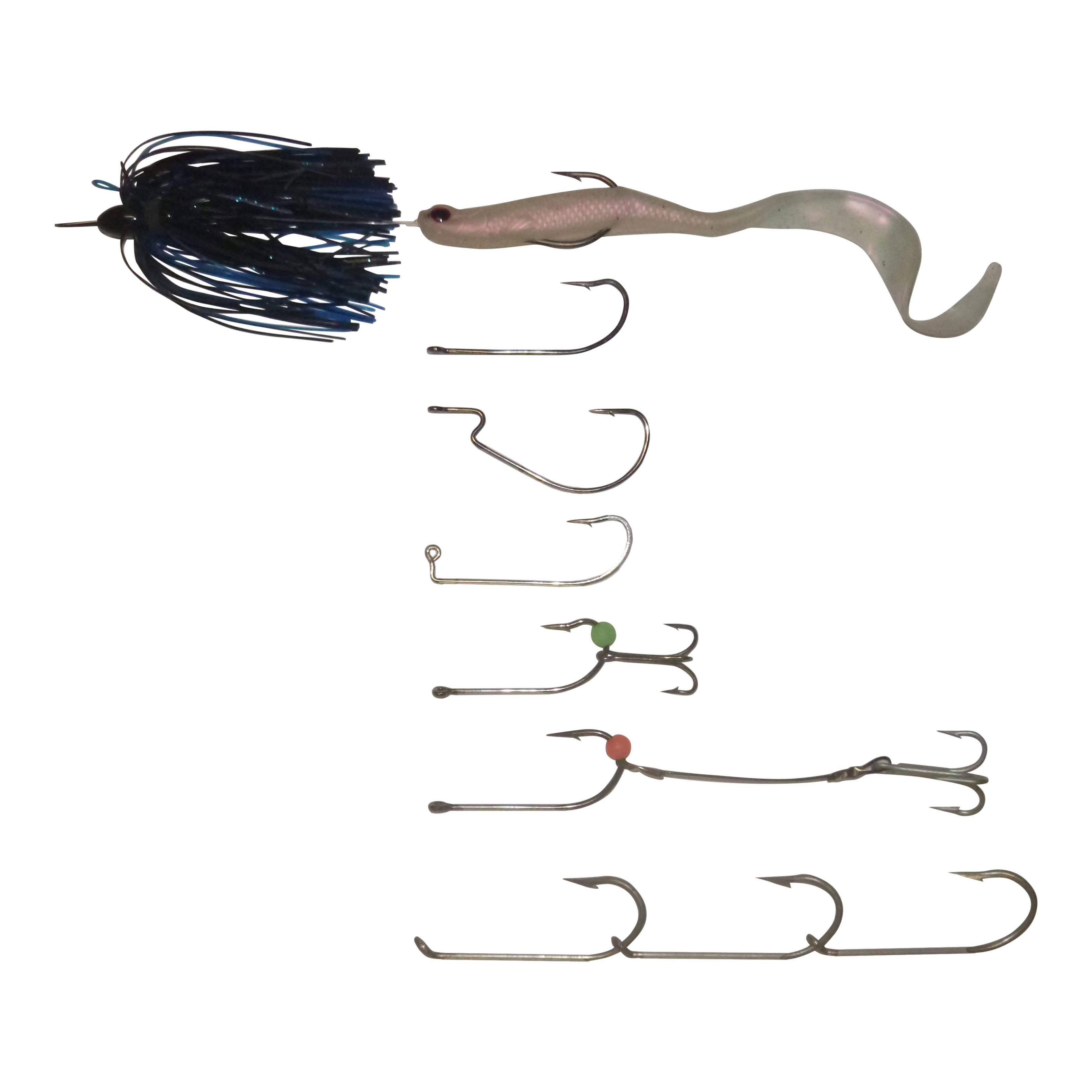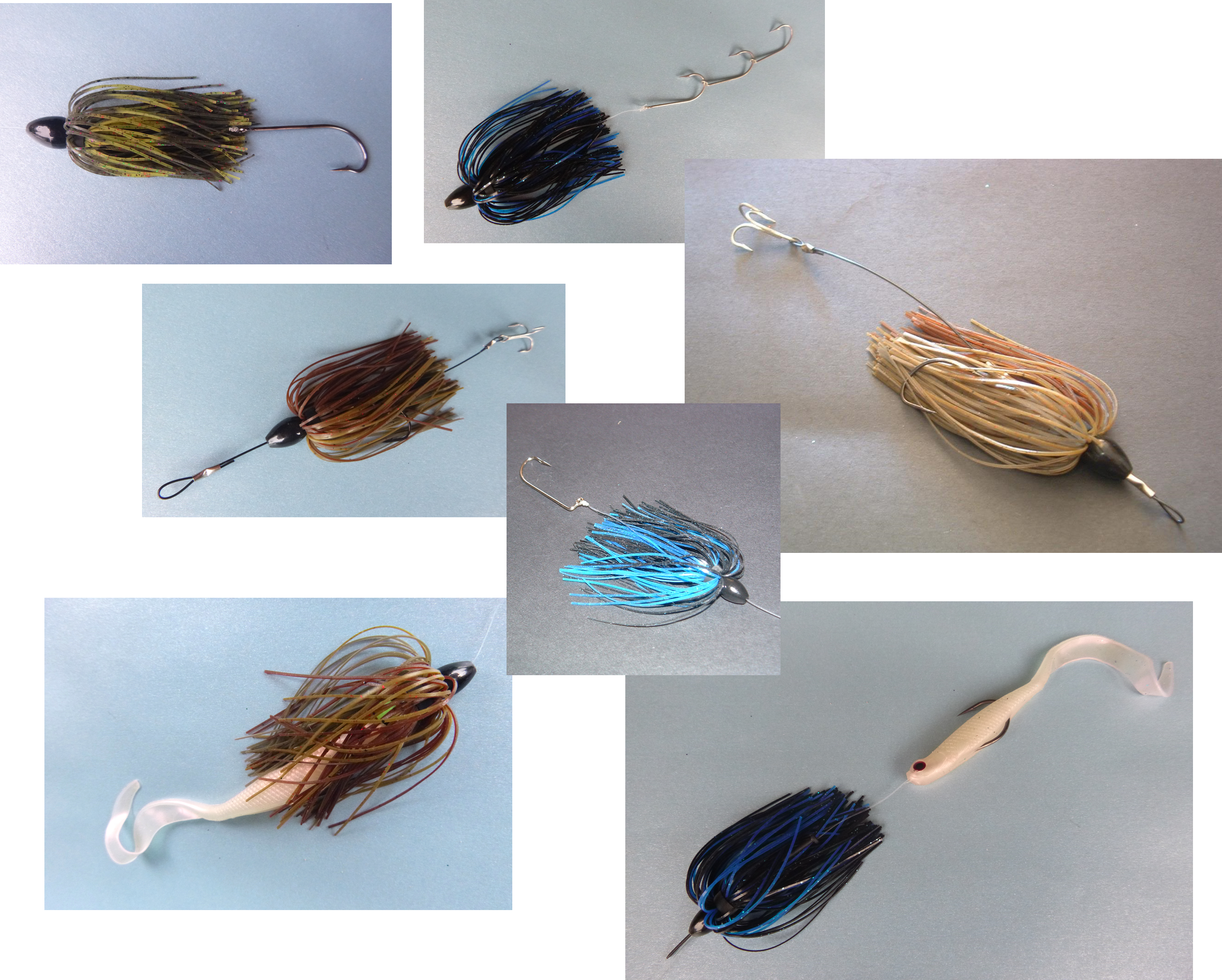Micro Jigging Techniques using Vike Skirted Micro Jigs

Skirted Jig Heads score high points for their versatility. Useful in a wide range of applications they are the perfect combination for finesse fishing situations that call for the look of a squid or octopus in action. Smaller and denser than traditional lead based rigs, tungsten is also super sensitive, allowing you to detect more strikes and catch more fish while greatly reducing hang ups! Simply feed your line through the weighted skirt, tie on your choice of Worm or Jig style hook, and rig up either a soft plastic lure or fresh bait. Then simply drop it to the bottom, raise it about half a metre, and just stick the rod into in the holder and let the motion of the boat do all the work for you.
Used in a similar fashion to Ocky Jigs, Chatterbaits and similar lure designs, Skirted Jig Heads are designed for horizontal jigging and punching through weed in shallow water or for vertical jigging in deeper water. They consist of a 52 strand skirt that utilizes multiple color breaks on a single strand. These strands rotate back and forth creating the illusion of a fully dimensional image. The durable tungsten head is denser than lead and equates to a smaller head and less bulk. The edges of the weight are polished and the line touches only the smooth machined surfaces. The fact that the line directly touches the tungsten on the insert free weights allows for more vibration to be transmitted through the line.
In fresh water and estuary situations the skirt becomes a target as inquisitive fish can't help reacting to the lure swimming past. Typically rigged so the head slides freely on the leader just above your selection of hook type, the shape of the head enables fishing to occur horizontally, as in cast and retrieve fishing, basically creating a jig that shields the bait or lure as it enters and exits thick vegetation without becoming snagged, allowing the hook and weight to separate when fighting a fish.
Suited for all blue water predators their versatility also makes them effective not only on resident reef but pelagic species as well.
For vertical ‘Micro Jigging’ in deeper water these Jig Heads can also be allowed to sink to any depth before making a retrieve, making them a great option when Snapper fishing, for instance. Out deep these lures are also deadly on many other bottom dwellers such as jewfish, kingfish and pearl perch as can’t help themselves and instinctively strike in reaction to it. In this situation the standard lift and drop jigging technique for soft plastics is the required presentation for these lures. When retrieving the lure you can opt for a steady wind, but it pays to break up this steady wind with some speed variation as this will provide an action that emulates that of an Ocky or Squid in action. Using a stop/start retrieve, with small pauses, enables the skirt to flutter and flare, presenting a larger, more enticing profile to larger fish.
Use them in combination with your favourite soft plastic or fresh bait eg Swimerz Vibro Tail lures, fresh squid, octopus, or a pillie as an added enticement. In this application the skirt will act as protection for the bait, reducing the likelihood of the bait being broken off the hook as it moves through weeds.
A number of lure and hook setups can be used (refer images below for rigging illustrations). The size and type of lure configuration chosen, fish species targeted, and relevant conditions will influence catch rates.
- Add a stopper (T stop, split ring, or other stopper type), fixing the skirt at the selected distance above the chosen hook setup, with the hook rig then being exposed, and you have the ability to fish vertically, jigging for species ranging from Bass in the fresh/brackish waters to Snapper in offshore situations.
- In some circumstances it pays to add a stinger hook to connect to short striking fish, particularly when fishing vertically, jigging for the likes of Snapper or Trolling for Australian Game species like Dolphin Fish, Mackerel and Wahoo etc. A stinger is a trailing hook behind the main hook. Pass the eye of the hook to be used as a stinger over the point of the main hook. The hook then swings loosely on the bend of the main hook when the lure is being retrieved. To prevent the stinger falling off, add a soft glow bead stopper over the point of the main hook and position it past the barb. The lure’s motion through the water will keep the stinger in the right position when a fish strikes.


